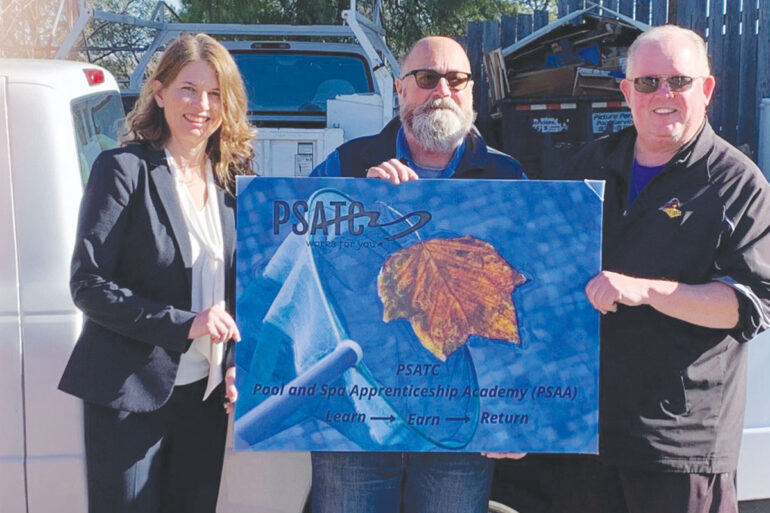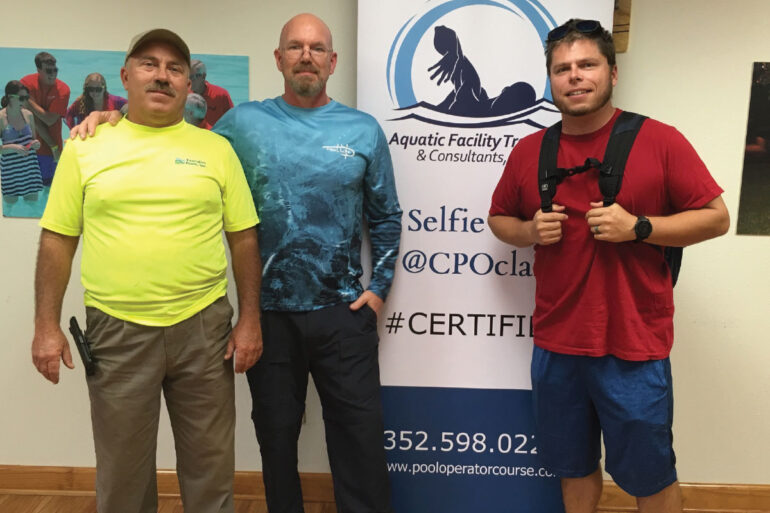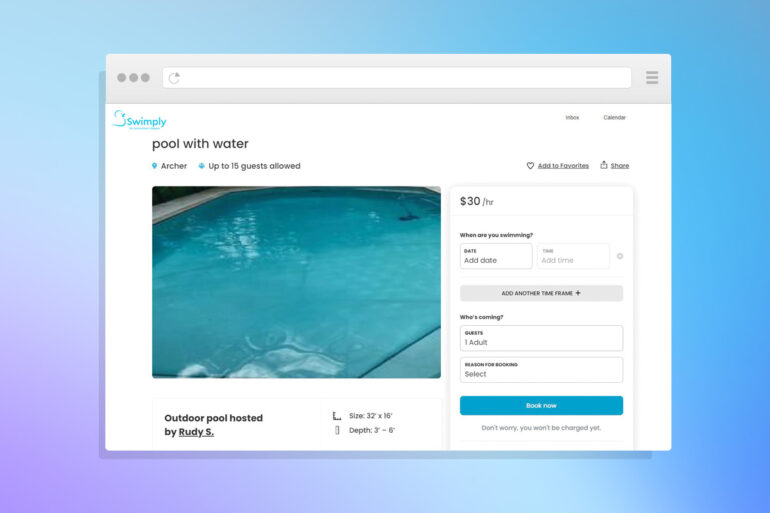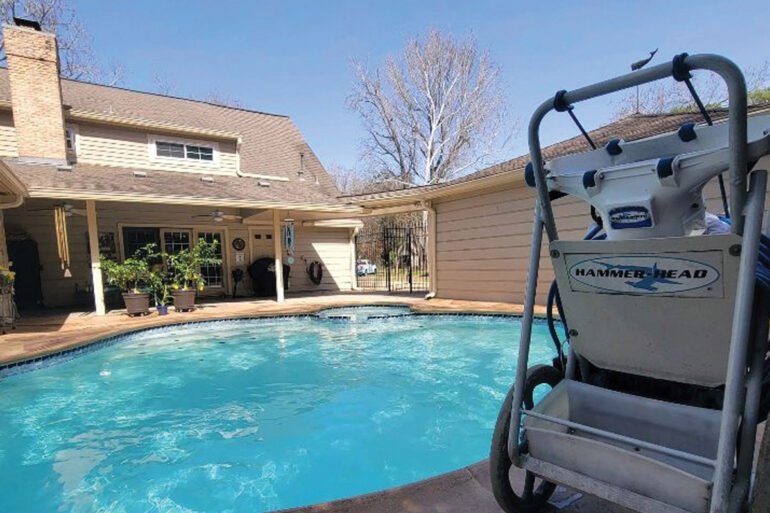Legionella Should be Taken Seriously
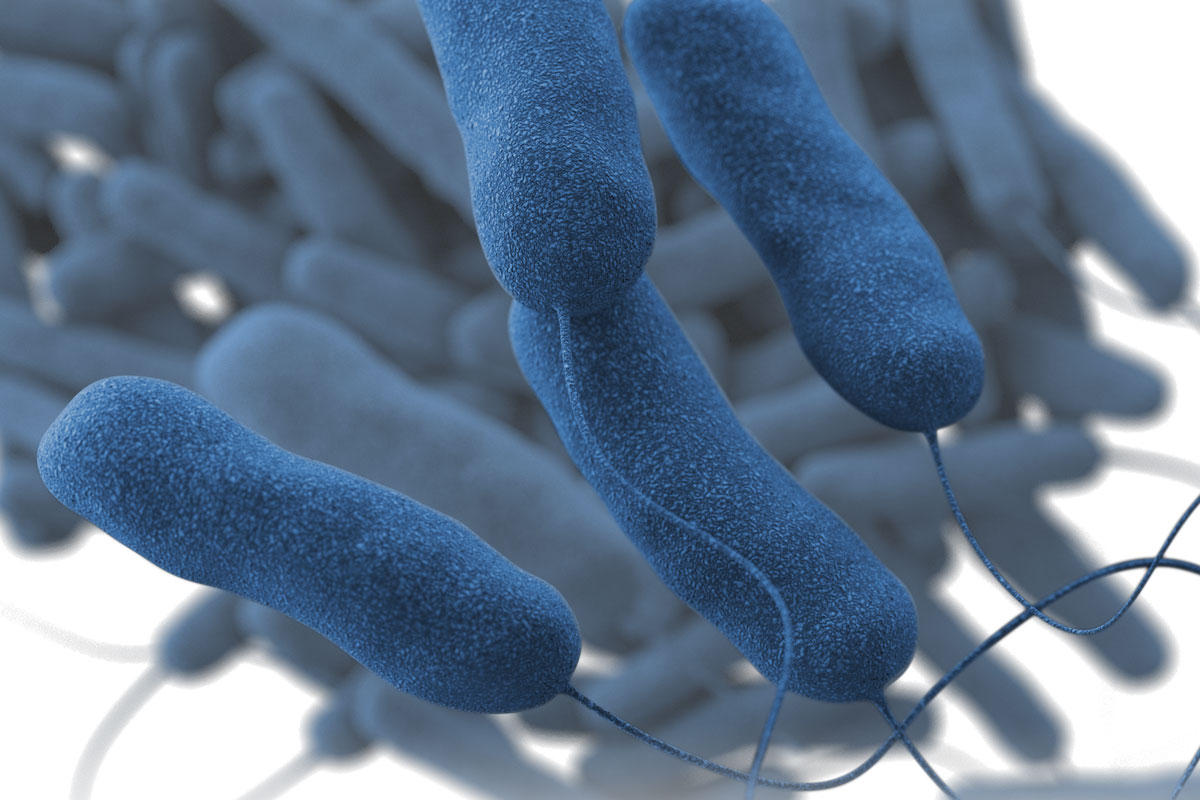
According to the CDC, reported cases of legionnaires’ have increased ninefold since Y2K, with health departments documenting more than 10,000 cases in 2018 alone. How can something that takes less than 10 minutes to kill at even a minimal level of chlorine be considered a significant threat? We deal with more complex and chlorine-resistant things than legionella, and we inactivate those just fine. After all, giardia and cryptosporidium are the scary zoonoses we hear about with swimming pools. These are the diseases whose remediation methods are drilled into our heads. It’s actually a requirement that I cover crypto and giardia in my classes.
I’ve even written a poem to help my students remember the treatments easily. Don’t grade me too harshly — I developed this with love in my heart to helping students remember what chlorine levels would be required depending upon fecal incident type in mind.
If it’s Poo, it’s Two. If it’s Runny, it’s Twenty.
I’m no Oscar Wilde, but it works. Suppose the accidental fecal release is a solid stool (poo). In that case, the treatment requires a chlorine level of 2 ppm (two) held for a period of 25 minutes with a pH of 7.5 or less. If it is a diarrheal release (runny), we’ll need to maintain the chlorine level in the pool at 20 ppm (twenty) for 12.75 hours with the pH also at 7.5 or less.
Clever verse or not, giardia and cryptosporidium, despite their formidability, are far from the most threatening illnesses people can contract from chlorinated recreational waters. They may be the hardest to kill, but they’re not the most deadly. Giardia’s mortality rate is 0.10% [Gerba et al. 1996; Macler and Regli 1993], and the risk with cryptosporidium in immunocompetent adults is dehydration due to diarrhea. Sadly, the threat significantly elevates in immunocompromised individuals where cryptosporidiosis can endanger organs beyond the intestinal tract.
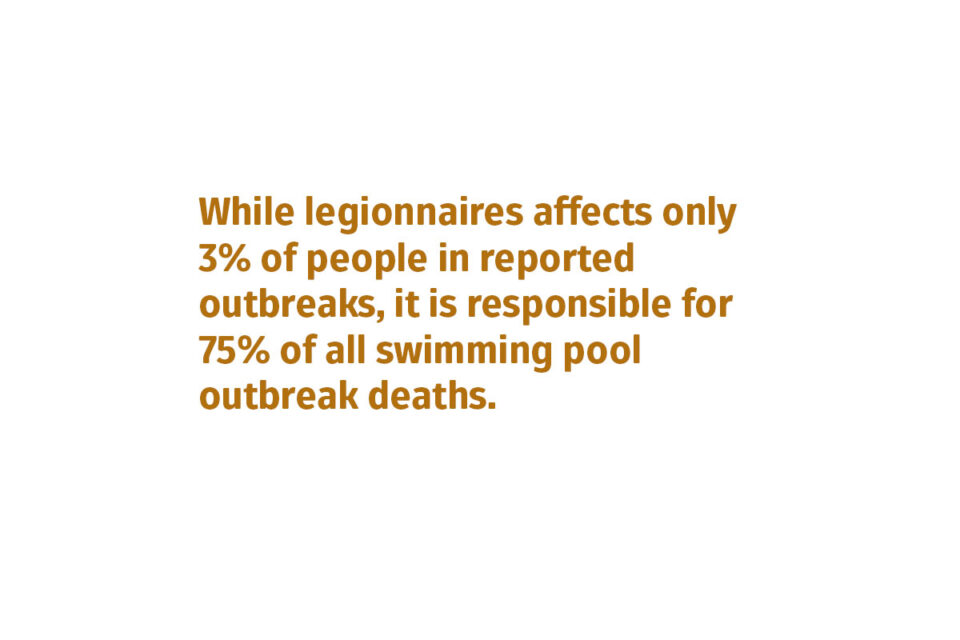
The real question is, how can legionnaires’ — a disease that affects only 3% of all people infected in reported outbreaks — be responsible for 75% of all swimming pool outbreak deaths? The next logical question is, why don’t we give it the same attention in training sessions that we do the protozoa I spoke of above? I know legionnaires’ accounts for a low percentage of reported illnesses, but three-quarters of all deaths is enormous.
It is easier to eradicate at nine minutes in a controlled environment at a chlorine level of 1 ppm with a pH of 7.6 or lower and a water temperature of at least 70°F [Kuchta et al., 1983]. Is that the problem: It’s easy to kill, so we don’t think about it as often? But is it easy to kill? Maybe when the bacteria are just free-floating in a fish tank. We deal with real swimming pools and have anything but a controlled environment.
The way someone gets legionnaires’ disease is by inhaling the bacterium legionella pneumophila. A swimming pool is not the likely culprit unless it has some feature that throws water into the air, like a fountain, spillover or grotto. Hot tubs are the usual suspects. All the bubbles from the blower creating a breathable mist and an ideal growth temp for legionella at 77°F to 108°F. To me, that makes this even scarier when you realize you don’t even have to get into the water to get it — all you need to do is walk past.
What about fountains? Most facilities do not take care of their decorative water features anywhere near as well as they maintain their swimming pools. The mist these create provide a perfect means of airborne transmission. The overwhelming majority of the calls I receive following an outbreak at a facility are related to fountains or hot tubs.
Here’s why I put a kibosh on the ‘nine minutes at 1 ppm’ we spoke about a moment ago. This does work to eradicate legionella, but only those bacteria that are free-floating. This is not always what occurs in an actual pool environment. Pool water is colder, and legionella pneumophila goes dormant at temps less than 68°F. However, some conditions allow the bacteria to thrive in swimming pools, and a cannonball does make a big splash.
Pools, spas and fountains are often rich in nutrients, such as iron and L-cysteine (released from the human body in the urine), that Legionella requires for growth. It is also well known that the bacterium will seek safe harbor in biofilms such as black algae (cyanobacteria) and WWM (white water mold), both of which can develop deep within the bowels of the plumbing, out of sight and out of mind.
Here, the chlorine level does not matter because, at best, it can only peel away from the outer layers, unable to penetrate the biofilm slime no matter what the ppm [Beer, Srinivasan, & Stewart, 1994]. This is why a regular brushing routine is an integral part of black algae prevention and mitigation [Stankowitz, How to Get Rid of Swimming Pool Algae, 2021]. Not only does legionella find sanctuary in the exopolysaccharide secretions of black algae and WWM, but it also thrives on it using those same extracellular polymeric substances as its carbon and energy sources [Tison, D L et al., 1980]. Sadly, this killer is on the rise. With many pools that remained unopened and unmaintained in 2020 due to COVID-19, the number of legionnaires’ cases for that season, when compiled, will undoubtedly have increased exponentially.

